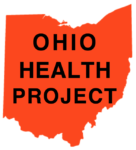In our attempts to learn more about Rogersville Shale, we’ve excerpted some information from Evidence for Cambrian Petroleum Source Rocks in the Rome Trough of WV and KY, Appalachian Basin (U.S. Geological Survey, Denver, CO Open-File Report 05-1443). Note that the information below is restricted to the reports findings for West Virginia.
None of OVEC staff are geologists or petroleum experts, but we have tried to take out the information that is presented in layperson’s terms.
In the 1970’s, Exxon drilled several deep test wells in the Rogersville Shale in West Virginia. Although Exxon drilled test wells in Calhoun and Jackson Counties, the samples from these two wells had a total organic carbon content (TOC) that was “too low for an effective source rock” (pages 5-6).
In 2003, USGS analyzed core samples from the 1977 Exxon Smith #1 test well in Wayne County. This report presents several different types of evidence all leading to the conclusion that
this Wayne County test well contains “free extractable hydrocarbons” (page 14).
This finding is consistent with a report released in 2014 by the Kentucky Geological Survey, which concluded that “a viable petroleum system exists in the Rogersville”.
A 123-ft thick shale from a core between 11,150 – 11,195 feet in the Exxon Smith #1 test well in Wayne County “has good source rock potential that, combined with favorable oil-source rock correlations, demonstrates a new petroleum system in the Rome trough.” (USGS page 14).
Again referring to the core samples from the Exxon Wayne County well, “Thermally, the samples are in the zone of late oil / early gas generation…. (page 14).”
While no specific data appeared to be cited for the existence of viable petroleum in West Virginia beyond Wayne County, the report concluded that “The new petroleum system, named the Conasauga-Conasauge/Rome probably extends along the Rome trough from eastern Kentucky to at least central West Virginia” (page 14).
“Although the Rome trough has known petroleum source rocks and known oil/gas accumulations, much uncertainty remains.” Questions include: thickness and extent of source rocks; are they widespread or only locally distributed; details on petroleum migration and “available traps”; the kinds of reservoirs in terms of rock & chemistry; “extent and integrity of the seals? Are they leaky or tight? They must hold petroleum…” (pages 13-14).
(Beyond page 14, the remainder of this 49-page report consists of various charts and graphs, many of which describe data from the Wayne County Exxon test well.)
USGS Open-File Report 05-1443 Authors:
Robert T. Ryder, U.S. Geological Survey, Reston, VA David C. Harris, Kentucky Geological Survey, Lexington, KY Paul Gerome, Equitable Production Company, Pittsburgh, PA Tim J. Hainsworth, GCSI, Flagstaff, AZ Robert C. Burruss, U.S. Geological Survey, Reston, VA Paul G. Lillis, U.S. Geological Survey, Denver, CO Daniel M. Jarvie, Humble Geochemical Services, Humble, TX Mark J. Pawlewicz.









